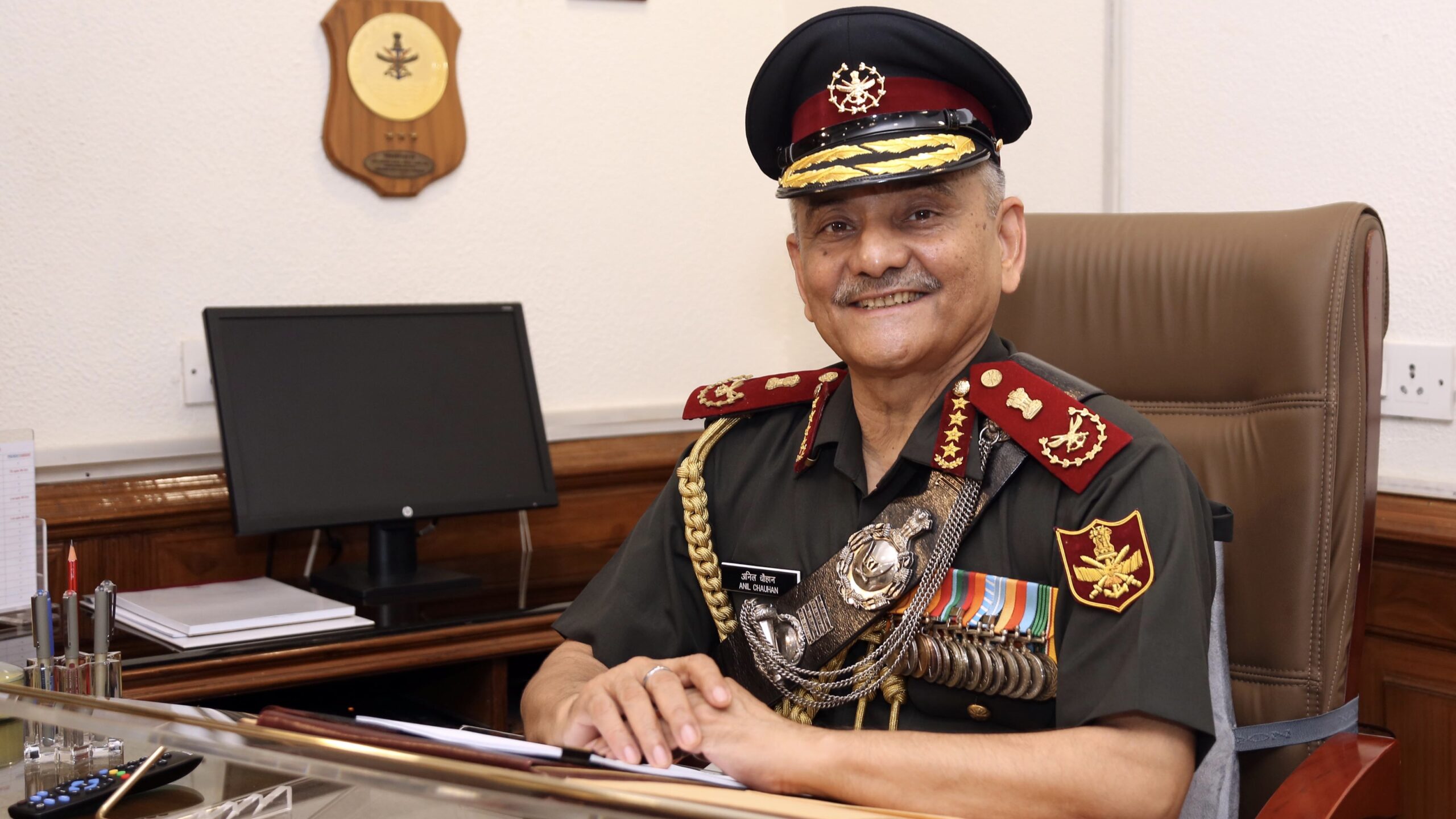General Chauhan’s comments, in an interview to Bloomberg TV, come after weeks of official silence or sidestepping on aircraft losses, despite mounting international reports suggesting such a possibility.
Published May 31, 2025 | 5:34 PM ⚊ Updated May 31, 2025 | 5:37 PM

Chief of Defence Staff General Anil Chauhan
Synopsis: India’s Chief of Defence Staff, General Anil Chauhan, has acknowledged for the first time that an Indian Air Force jet may have been downed by Pakistani forces during Operation Sindoor. While dismissing Pakistani claims that five jets were shot down, General Chauhan asserted that the key takeaway was not the loss itself, but the tactical lessons learned.
In the first official admission from the Indian military establishment, Chief of Defence Staff General Anil Chauhan on Saturday, 31 May, indicated that at least one Indian Air Force (IAF) fighter jet may have been downed by Pakistani forces during Operation Sindoor.
Speaking to Bloomberg TV, General Chauhan chose to frame the loss as a learning moment – before the IAF “understood the tactical mistake [it] made, remediated, rectified it, and then implemented [corrections] again after two days.”
“I think what is important is not the jet being downed, but why they were being downed,” General Chauhan said.
Launched weeks after the 22 April Pahalgam terror attack, Operation Sindoor involved coordinated air and artillery strikes on nine reported terror training camps across PoK and Pakistani territory.
General Chauhan’s comments come after weeks of official silence or sidestepping on aircraft losses, despite mounting international reports suggesting such a possibility.
However, the General dismissed Pakistani claims that it had shot down five IAF jets.
“Absolutely incorrect. And that is another piece of information I said is important,” he added.
“What is important is why they went down. That is more important for us. And what did we do after that? That’s more important.”
Despite the tacit confirmation, General Chauhan’s wording carefully aligns with India’s existing narrative since Operation Sindoor.
On 11 May, Air Marshal AK Bharti, Director General of Air Operations, offered a similar perspective when asked directly about possible jet losses.
“In a combat scenario, losses are a part of combat. The question that you must ask us – and indeed that we must ask ourselves – is: have we achieved our objectives? Have we achieved our objective of decimating the terrorist camp? And the answer is a thumping yes,” he said during a press briefing, while also stating that all pilots had returned safely.
“The results are for the whole world to see.”
On the night of 9 May, the independent news outlet The Wire was blocked for over 12 hours after publishing a CNN report on the alleged downing of Rafale IAF aircraft.
Access was restored the next evening after The Wire agreed to remove the article.
“Since our priority is to have The Wire unblocked, we have no option but to comply with this unfair demand, while reserving our rights under the Constitution of India to seek appropriate remedies,” the outlet said in a letter to the Ministry of Information and Broadcasting.
Since at least 9 May – at the height of conflict between Indian and Pakistan – international outlets have lent some credence to Pakistan’s claims of downing Indian jets, though none have offered conclusive evidence.
While Pakistan has made assertions, it has not released verifiable proof nor allowed independent media access to the alleged crash sites.
On 7 May, BBC Verify said it had authenticated three videos taken “from what appears to be the same field and purport to show the wreckage of a French-manufactured Rafale fighter jet.”
At least one clip was geolocated to a field near the city of Bathinda in Punjab, where Indian troops are reportedly seen collecting debris. The BBC quoted experts who said they believed it to be from a downed jet.
On 9 May, Reuters, citing two anonymous high-ranking US officials, reported that a Chinese-made Pakistani J-10 fighter jet shot down at least two Indian military aircraft during Operation Sindoor.
One US official, speaking on condition of anonymity, said there was “high confidence” that Pakistan had used the J-10 to launch air-to-air missiles that brought down at least two Indian jets. Another official said that at least one of the downed aircraft was a French-made Rafale fighter.
Notably, the report clarified that Pakistani F-16s – manufactured by the US-based Lockheed Martin – were not used in the engagement.
Meanwhile, on 27 May, a spokesperson for the French defence ministry, speaking at a press conference in Paris, said the situation remained unclear and that Paris was still assessing “conflicting accounts.”
“Obviously, we’re going to draw as much feedback as possible from this high-intensity combat use, which, according to some reports, involved several hundred aircraft,” the spokesperson said.
“But today, the main thing we can say is that the Rafale has been in service for 20 years – 20 years of combat use – and if it were true that there was a loss, it would be the first combat loss of this warplane.”
(Edited by Dese Gowda)
